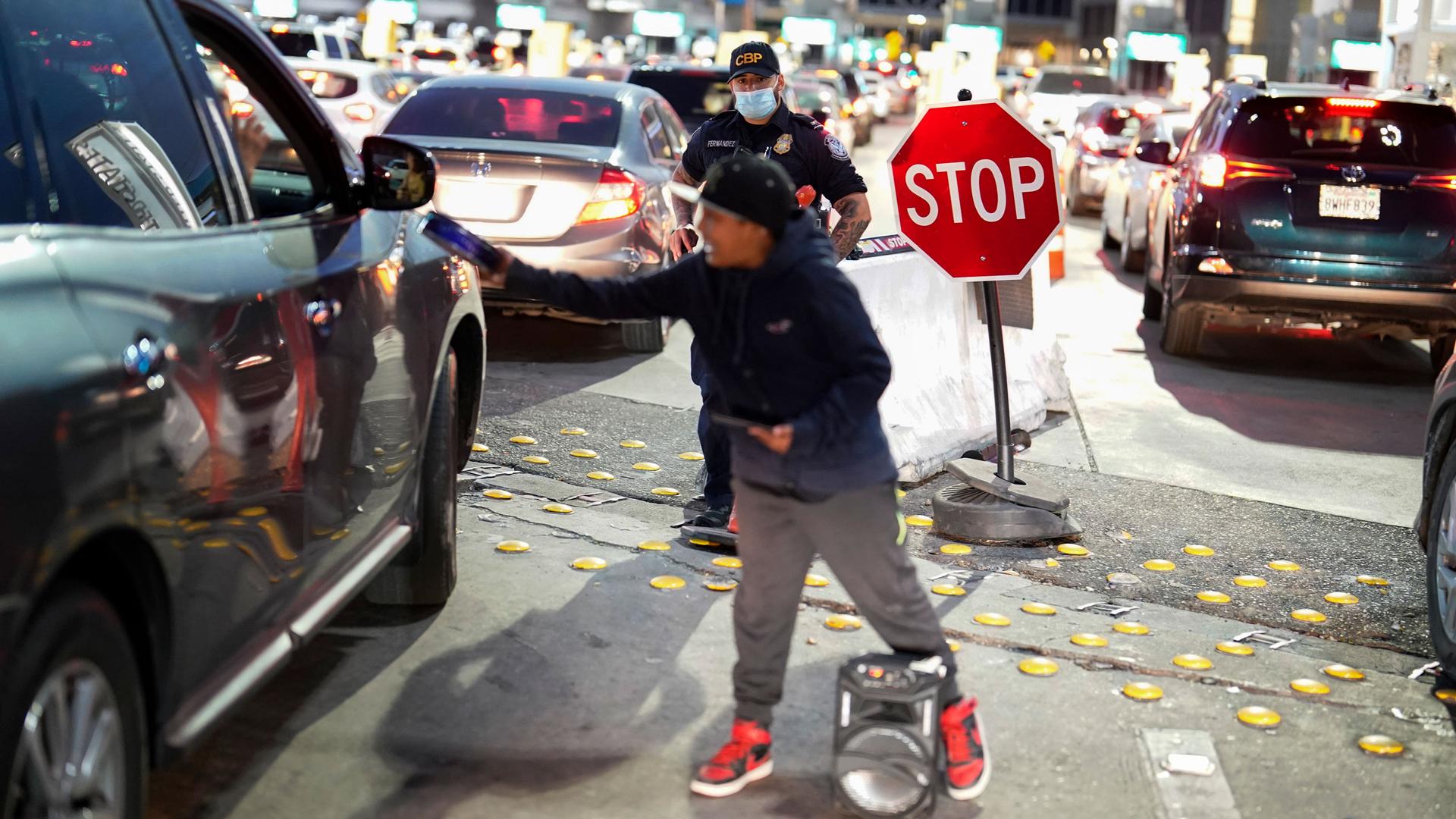Dmitry Politov spent months planning for a beach vacation in Cancún, Mexico. He bought round-trip tickets from Moscow and paid for a hotel room. But when he arrived in Mexico last summer, he didn’t go to the beach.
Instead, he traveled to Tijuana, just across the border from San Diego, and never went back to Russia.
“I was scared for my life. … I would be in jail now.”

“I was scared for my life,” he said. “I would be in jail now.”
Politov, 29, identifies as a supporter of jailed Russian dissident Alexi Navalny.
He spent months carefully planning his escape and decided to seek asylum in the United States.
But due to the pandemic, the US had stopped processing asylum applications filed from any port of entry in March 2020, under a controversial health policy known as Title 42.
Related: Trump’s hard-line immigration policies build on the history of former US presidents
That’s why many asylum-seekers, including Politov, have decided to risk crossing the border without authorization to enter.
Politov lives now in Sacramento, California. In a YouTube video, he describes his journey and confesses to nerves before crossing the border.
“The crossing can be very dangerous,” he said. “But I am free. America feels like home for me.”
Related: ‘We have compassion for them’: Romania is taking in thousands of Ukrainian refugees
The number of Russians and Ukrainians attempting to enter the US from Mexico has increased in recent months, according to data released by the US Customs and Border Patrols.
The pattern started months before Russia began its invasion of Ukraine.
More than 7,100 Russians crossed the border, without authorization, between October 2021 and February 2022 — that is 26 times more than the same period the previous year.
Ukrainians have also been crossing in greater numbers, with 1,300 asylum-seekers in the first five months of 2022, compared to 43 in 2021.
Jessica Bolter, associate policy analyst at the Migration Policy Institute, attributes the spike to the COVID-19 pandemic and the increased repression by the Russian government.
Related: ‘We have the means to support them’: Canada prepares to welcome thousands of Ukrainian refugees
“We have seen the legal pathways for Russians and Ukrainians to come to the US narrowing over the past couple of years. And this may be why some are turning to the border. It’s much easier for them to get permission to travel to Mexico.”
“We have seen the legal pathways for Russians and Ukrainians to come to the US narrowing over the past couple of years. And this may be why some are turning to the border. It’s much easier for them to get permission to travel to Mexico.”
Bolter said the US consulate in Ukraine stopped processing tourist visas since the beginning of the pandemic. Vladimir Putin’s government has also increased prosecutions of Russian dissidents and members of the LGBTQ community in the last few years, she said.
Dmitry Politov tried crossing the border twice.
On his first attempt, he paid $1,200 to a smuggler who grouped him with six other people from Eastern Europe. But they were stopped right before the border and sent to a detention center.
After he was released, a few days later, he gave it another try. He joined a group of five other Russians and purchased a truck for $2,000 from a car dealer in Tijuana. “This time we chose a better time for crossing the border,” he said. They crossed at about 2 a.m.
“It was easy,” he said.
This way of crossing the border is popular among Russian and Ukrainian citizens, according to Taylor Levy, an immigration lawyer who specializes in asylum-seekers at the US southern border.
“Because of operational staffing issues, Customs and Border Patrols do not always have sufficient agents to staff the car lines of all the ports of entry. … They pretty much always have agents stationed in the pedestrian line, but not always stop all the cars before they touch US soil.”
“Because of operational staffing issues, Customs and Border Patrols do not always have sufficient agents to staff the car lines of all the ports of entry,” she said. “They pretty much always have agents stationed in the pedestrian line, but not always stop all the cars before they touch US soil.”
After a few asylum-seekers successfully used this method to enter the United States, she said, the idea spread through social media.
“Certain tactics become popular with specific ethnic groups,” she said.
Many Europeans also have the resources to pay for cars, compared to migrants from other nationalities, who enter by foot and use pedestrian lines, she said.
The number of asylum-seekers from Russia and Ukraine is likely to increase in the coming months as a result of the armed conflict, according to Erika Piñero, litigation and policy director of Al Otro Lado, an organization in Tijuana that works with migrants and refugees.
“We saw Russians and Ukrainians being admitted kind of on an ad hoc basis. We saw some of them sleeping outside of the port of entry and waiting days to be admitted. So, there were really no clear guidelines, there is a lot of confusion.”
“We are starting to see the first wave of people who are fleeing the conflict,” she said. “We saw Russians and Ukrainians being admitted kind of on an ad hoc basis. We saw some of them sleeping outside of the port of entry and waiting days to be admitted. So, there were really no clear guidelines, there is a lot of confusion.”
Eastern European nationalities only represent 2% of the total number of people who attempted to cross the border in February, according to CBP numbers. Hundreds of thousands of migrants from Central America and Haiti have been waiting for years at the US-Mexico border for a chance to be admitted, Piñero said.
She noticed this crisis has shed light on the disparate treatment of migrants by immigration officials depending on nationality.
“What I have personally observed is that CBP tends to be more polite or tell [Europeans] to wait,” Piñero said. “They converse with them, treat them like human beings. But when we see Central American or Black migrants approaching the port of entry, they are told to leave, they are screamed at, they’re told that they cannot access asylum at all, they are not told to wait.”
For immigration lawyer Levy, it is time for the Biden administration to end the Title 42 policy.
Under the Biden administration, Human Rights First has documented nearly 10,000 cases of torture, rape and other violent attacks on people who have been expelled to Mexico from the US border due to the Title 42 policy.
“It’s ultimately giving a lot of money to organized crime, giving a lot of money to the smugglers. It causes people to cross over and over again. It’s causing parents to send their children across alone,” Levy said.
